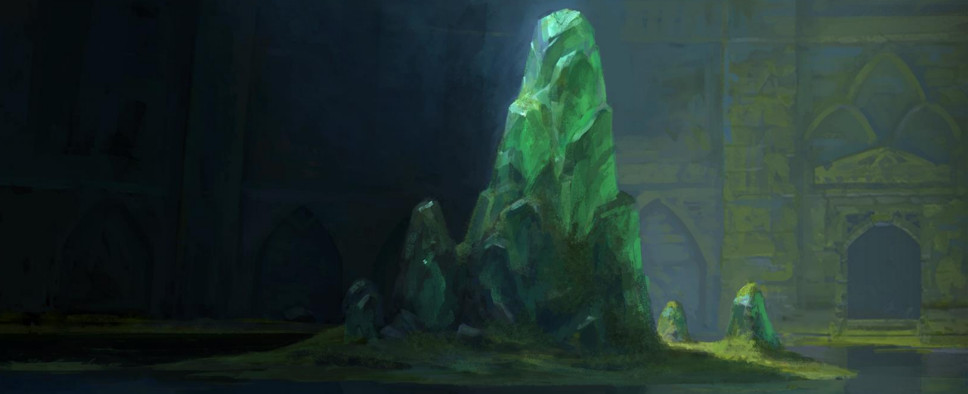Pillars of Eternity: The White March Part II Will be Last Expansion, Obsidian Talks Sequel
-
Category: News ArchiveHits: 20742

While much of the PAX Prime retrospective panel for Pillars of Eternity focused on the development of the main game, Obsidian Entertainment developers J.E. Sawyer, Adam Brennecke and Brandon Adler, respectively game director, executive producer and lead programmer, and lead producer, also discussed the company's future plans for the series.
We already knew that Obsidian's team intended to develop a sequel after the successful release of the Kickstarter-funded IE-inspired RPG, but now we also have a rough timeframe for when they intend to start the work on the sequel, and what kind of features they intend to explore for it. Right now, Obsidian is working on The White March Part II, which will be the last expansion for Pillars of Eternity. When put together, Obsidian's developers estimate the expansions to be around the same scope or slightly bigger than Tales of the Sword Coast, the expansion for the original Baldur's Gate from BioWare.
After developing the expansion, Obsidian intends to move on to a proper sequel, and director J.E. Sawyer explained some of the ideas they have to improve on the foundation on the original. First of all, Obsidian is aware of the negative feedback concerning the stronghold and plans to revamp it for an eventual sequel, with the goal of making the mechanic closer to how it worked in Baldur's Gate II. The focus will be on producing more and better content for the Stronghold rather than elaborating on the systems they've built in the first game. Sawyer also mentioned possibly letting player choose between various strongholds, rather than having a single one for all characters.
Brennecke also mentioned removing loading screens between major areas and small interiors and sub-areas. Obsidian is aware of the complaints concerning long loading times and is working on it, but major improvements might only come to the sequel because they require a major refactoring of the system under the hood. Mechanics-wise, Sawyer explained that he's currently experimenting with multi-classing, a fan-favorite feature. He's aware of how hard it is to do the mechanic right, because traditionally multi-classing has led to either non-viable class combinations or extremely overpowered ones.
Expanded AI tools for the designers are also a focus and Brennecke mentioned that ideally they'd like to expose those same systems to the players, granting them additional customization over the barebones AI packages that have been introduced in The White March Part I. Speaking of exposing, Obsidian also wants to offer much larger modding possibilities for a sequel, and will largely do this by exposing more data and making it much easier to edit. Brennecke is convinced that the company has a good plan in place to do this, though it can't retroactively be applied to the original game because of how large a rewrite it would be.
Brandon Adler also mentioned that there are additional plans but that they didn't think to mention them during the presentation because they're either very vague or too technical to really be worth talking about with the general public. They do, however, plan to improve the graphical fidelity for a sequel. Presumably, the non-technical part of the graphical improvements will come via the more aggressive 2d touch-ups for the area that the environment art team has been doing for the expansions, which Sawyer mentioned earlier in the panel.
The rest of the panel was focused on the development of the game and contained a lot of anecdotes concerning things the developers learned along the way, and the process they used to arrive at the final content and systems. I won't really focus on transcribing the things that were said about the game's logo, areas, systems, and pre-order bonuses, but there are a few interesting facts that are worth mentioning.
Lead producer Brandon Adler doesn't feel like development on Linux was particularly worthwhile. The Linux playerbase for the game makes up for less than 2% of the game's total players, and, while Unity made it easier to port the game to Linux, Obsidian had never developed a title on the OS before and needed to fix a lot of bugs to get it working. The studio will be looking again at things like how many and what options are presented to players, and New Game+ for a sequel. Apparently, Adam Brennecke really dislikes the current handling of cleric spells, because too many options are offered to players at the same time without a clear indication of their use in combat.
As for New Game+, it was something that the team considered during the development of the game but simply couldn't implement due to time constraints. Many of the developers at the studio are Dark Souls fans, so NG+ content is something that team sees the appeal of. Finally, in spite of the other Kickstarter console ports, Obsidian isn't interested in bringing the game to consoles. However, they have experimented with the Steam controller and tablets as input methods, and will look at them in the future.

